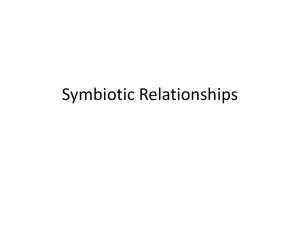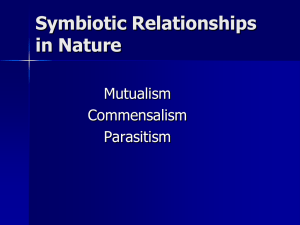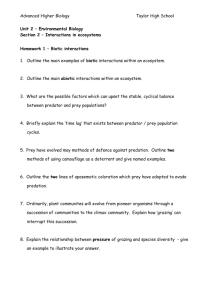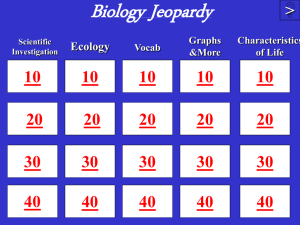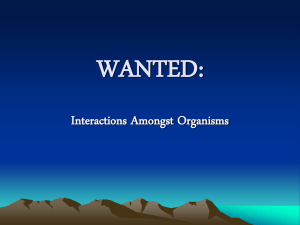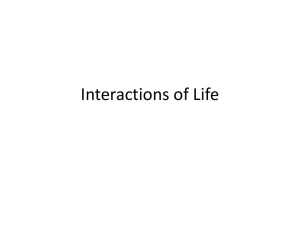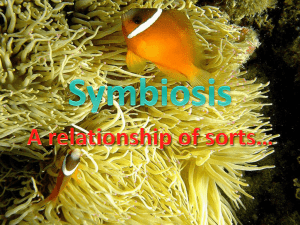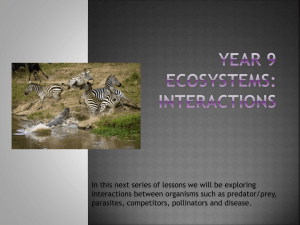Symbiotic Relationships
advertisement
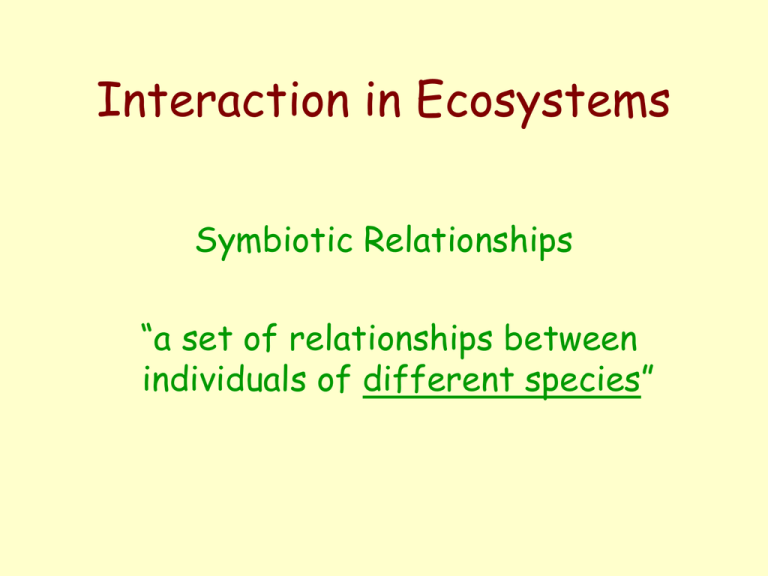
Interaction in Ecosystems Symbiotic Relationships “a set of relationships between individuals of different species” 3 types of symbiotic relationship Symbiotic Relationships Parasitism Commensalism Mutualism Parasitism -where one partner (the parasite) benefits and the other is harmed (the host). Parasites may be: • obligate (ie completely dependent on the host) • facultative (ie can survive without the host) Parasites may be….. ...endoparasites, which live inside the body of the host. They tend not to kill their host. Example: Tapeworm Parasites may be….. • …….. ectoparasites, which live on the outside of the host. Example: Fleas Transmission of Parasites to New Hosts. Method 1 • Direct contact eg head lice Transmission of Parasites to New Hosts. Method 2 • Resistant stages eg liver fluke larvae Transmission of Parasites to New Hosts. Method 3 • Vectors and secondary hosts eg cat tape worms and mice. • The eggs of a tapeworm living in the gut of a cat passes its eggs with the cat faeces. These may fall amongst grain which the mouse inadvertently eats. The eggs hatch into larvae inside the mouse which if eaten by a cat starts the process all over again. Parasitism Further Reading • Environmental Biology Monograph pages 20/21 • DART Environmental Biology Notes pages 32/33 • Trials of Life by David Attenborough pages 176 - 184 Commensalism • ‘one partner benefits whilst the other remains unaffected’ • The relationship is usually based on feeding and/or protection. Commensalism Example 1 • Shark and Remora. The Remora feeds on scraps out of the shark’s mouth. The shark gets no benefit or harm. Commensalism Example 2 • eg two toed sloth and slothy moths. The moths get a free ride to find mates and lay their eggs in the droppings of the sloth. When the caterpillar hatches it feeds on the droppings. The sloth is unaffected. Commensalism Further Reading • Environmental Biology Monograph, page 21 • DART Environmental Biology Notes, page 34 • Trials of Life by David Attenborough, pages 170 - 173 Mutualism • ‘where both partners benefit.’ • Very common • Often involves exchange of metabolic products • Often close structural compatability Mutualism Example 1 Eg Warthog and oxpecker. The oxpecker gets a supply of food and the warthog gets rid of parasitic ticks. Mutualism Example 2 • Eg leguminous plants and Rhizobium bacteria. • The plant gets a supply of nitrate and the Rhizobium gets provided with leg-haemoglobin to limit oxygen supply. Mutualism Example 3 • eg sloths and algae. • The algae provides camouflage--giving the sloth a greenish tinge to match tree foliage. It also provide nutrients, which the sloth eats by licking or is absorbed directly through the skin. • The algae are provided with a habitat and moisture when the sloth licks the skin Mutualism Further Reading • Environmental Biology Monograph, page 22 • DART Environmental Biology Notes, pages 35 – 36 • Trials of Life by David Attenborough, chapter 7 ‘Living Together’ • Animal Watching by Desmond Morris, chapter titled ‘Mutual Aid’ Symbiotic Relationships • Now watch the ‘Weird Nature’ video titled ‘Relationships’
